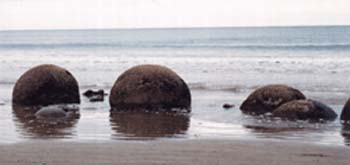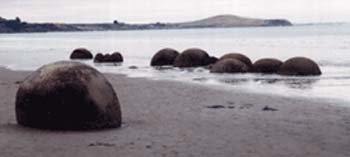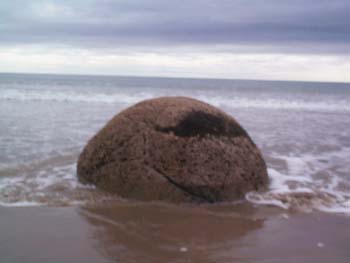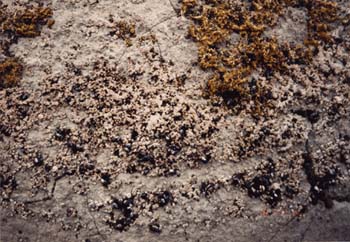The Moeraki Boulders — 19 February 2001

Fascinated with the Moeraki Boulders well before we departed for New Zealand, I begged for a stop in Oamaru. Carl, thank you. The following text is a summarization of information from a publication by the Institute of Geological & Nuclear Sciences.

The Maori take: when the great canoe Arai Te Uru foundered in a storm near Matakaea, the cargo — round food baskets and water gourds — washed up on the nearby beaches.

The Scientists' take: once buried in the mudstone cliffs, the boulders have slowly been released onto the beach as the surf eats away at the cliff face.

About 60 million years ago muddy sediment accumulated on the sea floor. Within the wet sediment the cementing mineral calcite gradually crystallized around organic nuclei to form spherical nodules.

The outside surface of the developing conceretions then became hard and brittle, and the inside material began to dehydrate by chemical reactions, causing shrinkage cracks to propagate outwards from the core to the rim.

Beginning in the Miocene period, the region had been uplifted on the edge of the new New Zealand landmass.

In the last few million years, erosion of this landmass exposed the mudstone beds containing the Moeraki Boulders.
| |